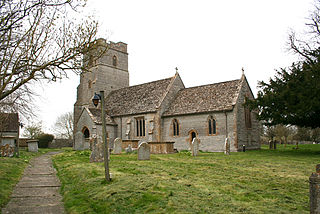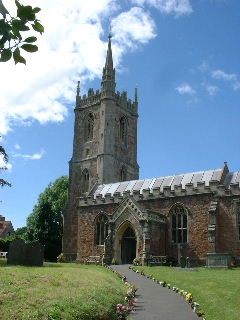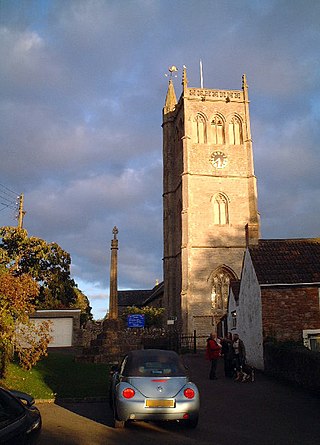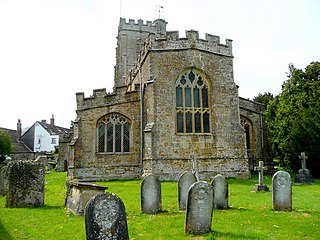
Babcary is a village and civil parish in Somerset, England, about 5 miles (8.0 km) east of Somerton and 6 miles (9.7 km) southwest of Castle Cary. The village has a population of 248. It lies close to the River Cary and the A37. The parish includes the hamlet of Foddington.

The Anglican St Andrew's Church is on the outskirts of Chew Stoke, within the English county of Somerset. The church, parts of which date from the 15th century, is a Grade II* listed building.

The Church of St Mary Magdalene in Chewton Mendip, Somerset, England, was built in the 1540s and has been designated as a Grade I listed building. It is dedicated to Jesus' companion Mary Magdalene.

The Church of St Peter and St Paul dominates the village of Bleadon, Somerset, England.

Church of St Peter, Staple Fitzpaine is Norman in origin, and has been designated as a Grade I listed building.

The Church of All Saints which is next to the River Brue in Alford, Somerset, England, dates from the 15th century, with minor 19th-century restoration. It has been designated as a Grade I listed building.

The Church of St James is a redundant church in Cameley, Somerset, England, dating from the late 12th century. It is recorded in the National Heritage List for England as a designated Grade I listed building, and is in the care of the Churches Conservation Trust. It is dedicated to St. James of Compostela. The church was declared redundant on 1 January 1980, and was vested in the Trust on 18 March 1981.

All Saints Church in Castle Cary in the English county of Somerset dates from 1470 and is notable for its high steeple. It is a Grade II* listed building.

The Anglican Church of the Holy Trinity in Newton St Loe within the English county of Somerset is a Grade II* listed building.

Holy Trinity Church in Abbots Leigh within the English county of Somerset is a 15th-century Perpendicular Gothic building, restored and partially rebuilt in 1847–48 after a fire. It is a Grade II* listed building.

The Anglican Church of St John in Cutcombe, Somerset, England was built in the 13th and 14th centuries. It is a Grade II* listed building.

The Anglican Church of st Mary in Donyatt, Somerset, England was built in the 15th century. It is a Grade II* listed building.

The Anglican Church of St Mary Major in Ilchester, Somerset, England was built in the 13th century. It is a Grade II* listed building.

The Anglican Church of St Peter in Ilton, Somerset, England was built in the 14th century, incorporating fragments from 12th and 13th. It is a Grade II* listed building.

The Anglican Church of St Andrew in Dowlish Wake, Somerset, England, was built in the 14th century. It is a Grade II* listed building.

The Anglican Church of St Michael in Wayford, Somerset, England was built in the 13th century. It is a Grade II* listed building.

The Anglican Church of All Saints in Merriott, Somerset, England was built in the 13th century. It is a Grade II* listed building.

The Church of St Andrew in Ansford, Somerset, England, was built in the 15th century. It is a Grade II* listed building.

The Anglican Church of St John the Baptist in North Cheriton, Somerset, England was built in the 14th century. It is a Grade II* listed building.

The Anglican Church of St Nicholas in Holton, Somerset, England was built in the 14th century. It is a Grade II* listed building.




















